Mohs Scale of Hardness chart-know the procedure and method
The Mohs scale
The Mohs scale is a chart of the relative hardness of the various minerals from softest to hardest. The scale was developed in 1822 by Frederich Mohs. Since hardness depends upon the crystallographic direction, there can be variations in hardness depending upon the direction in which one measures this property. So, the test is useful because most specimens of a given mineral are very close to having the same hardness. This makes hardness a reliable diagnostic property for most minerals. Friedrich Mohs selected 10 minerals of distinctly different hardness that ranged from very soft mineral talc, Moh’s scale 1 to a very hard mineral diamond, Moh’s scale 10.
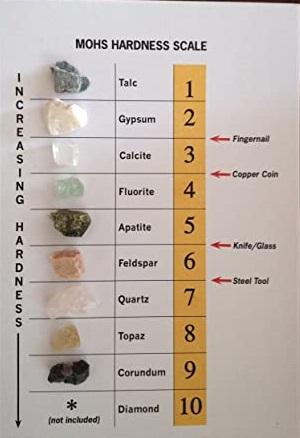
Mohs Scale of Hardness chart is especially useful for identifying minerals in the field because minerals tests can be done with some very common objects like fingernails, penny, and nails. The Mohs Hardness Test is used to determine the relative hardness of mineral specimens. This can be done as part of a mineral identification procedure in the field, in a classroom, or in a laboratory. It is very useful when more sophisticated tests are not available.
Hardness Comparisons of the Mohs scale
“Hardness” of Mineral is the resistance to being scratched. The test is conducted by placing a sharp point of one specimen on an unmarked surface of another specimen and attempting to produce a scratch. Situations are given below that you might observe when comparing the hardness of two mineral specimens-
- If Specimen A can scratch Specimen B, then Specimen A is harder than Specimen B.
- If Specimen A does not scratch Specimen B, then Specimen B is harder than Specimen A.
- If the two specimens are equal in hardness then they will be relatively ineffective at scratching one another. Small scratches might be produced.
- If Specimen A can be scratched by Specimen B but cannot be scratched by Specimen C, then the hardness of Specimen A is between the hardness of Specimen B and Specimen C.
Mohs Scale of Hardness chart is as follows-
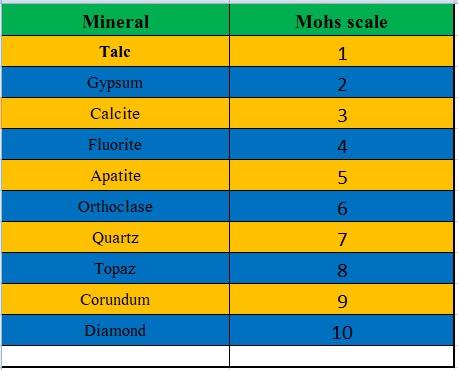
The above mineral is, a series of ten minerals arranged from the softest to the hardest such that a mineral with a lower number can be scratched by a mineral with a higher number
The hardness of Common Objects
Some are a few common objects to check the hardness. The contents of the kit often include-
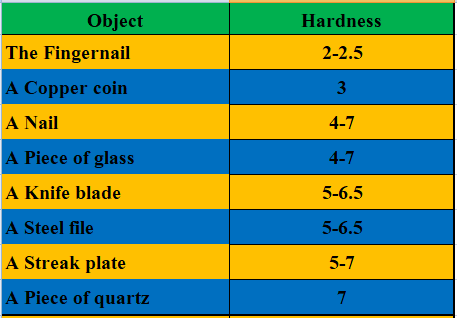
Important of Hardness
The effects of hardness are important in the mineral industry, specially Abrasives minerals are used to form and polish many substances. Diamonds are an important mineral component in cutting tools for the manufacturing of metals and for cutting cores in oil wells and mineral exploration. Emery, a variety of corundum, is used in many abrasive products. Garnets were used as an abrasive in sandpaper. Talc is an extremely soft mineral that has been used in talcum powder. Apart from this Mineral harness is also important in sedimentary rocks. Harder minerals are able to travel longer distances down river systems. Zircons are persistent minerals in the environment and are important to identify original source rock for metamorphic or sedimentary rocks.
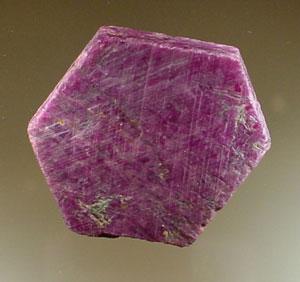
Mineral hardness is also important in the topography of many landscapes. Quartz-bearing rocks are often more resistant to weathering and will produce the capstones that protect the tops of buttes and mesas from erosion. This may help in the study of the Topography of a particular area
Mohs Scale of Hardness chart Compared with Others
At the time when Friedrich Mohs developed Moh’s hardness scale, very little information about mineral hardness was available. He simply selected ten minerals that varied in hardness and placed them on a scale from 1 to 10. Mohs Scale of Hardness chart is a relative scale in which a mineral of unknown hardness could be tested against a group of ten index minerals to see where it is positioned on the scale and what can be hardness. Over time The Mohs scale has been widely used throughout the world for over 200 years, mainly because it is easy to do, inexpensive and people quickly understand the hardness of the Minerals. Other hardness tests scale is given but none of them are in as widespread use. One of these scales is the Vickers Hardness Scale. In the Vickers test, the size of the mineral hardness identification is microscopically estimated and used to calculate a hardness value.
Also, read- Bowen’s Reaction Series and its significance in the Mineral formation
When compared to the integer values of the Mohs scale, The Vickers hardness values provide more information about the hardness of minerals and form a continuous scale. See the table comparing the Mohs scale minerals to their Vickers hardness. diamond is enormously harder than corundum.
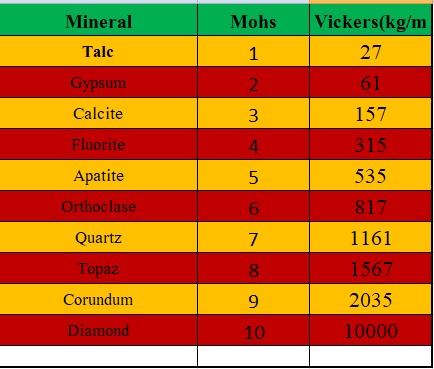
Hardness testing procedures
If the hardness of the unknown specimen is about 5 or less, you should be able to produce a scratch without much exertion. However, if the unknown specimen has a hardness of about 6 or greater, then producing a scratch will require some force.
some times soft minerals produce a mark on a hard unknown mineral, Don’t be fooled by this. The mark is like what a piece of chalk produces on a blackboard. It will wipe off without leaving a scratch. Wipe your finger across the tested surface. If a scratch was produced, there will be a visible groove. If marks wipe away then a scratch was not produced. Check for scratch with a hand lens.
Some hard materials are also very brittle. If one of your specimens is breaking or crumbling rather than scratching, you will have to be very careful while conducting the test. Some specimens contain impurities. For that, you can check the impurities and do the test again.
Some people rub one specimen back and forth against another and then look for a mark. That is not the method for testing a mineral’s hardness. It is done with a single, slow, firm pressure and the goal of cutting a scratch.
When doing the hardness test, place a thick sheet of heavy cardboard or a rubber pad on a table to protect its surface from being scratched. Take a large piece of specimen for Moh’s hardness test.
Resource-Nps.gov, Geology.com, minsocaam.org
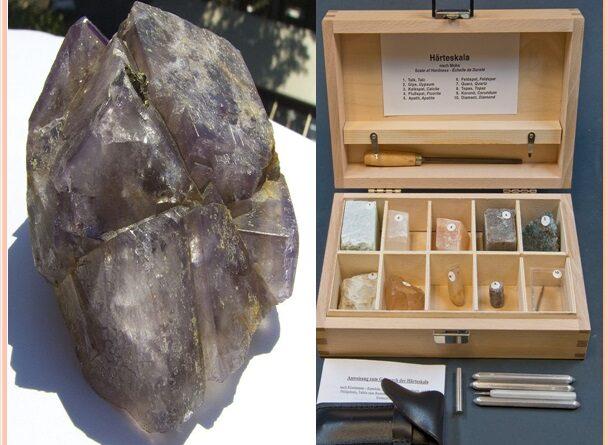
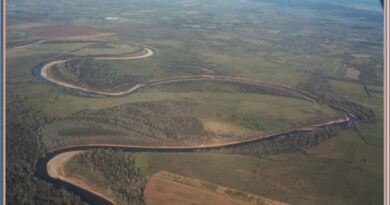
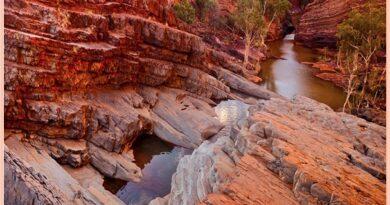
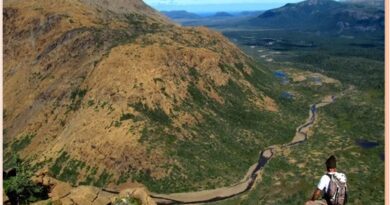
Pingback: Major mineral group and their Properties - Geotourism